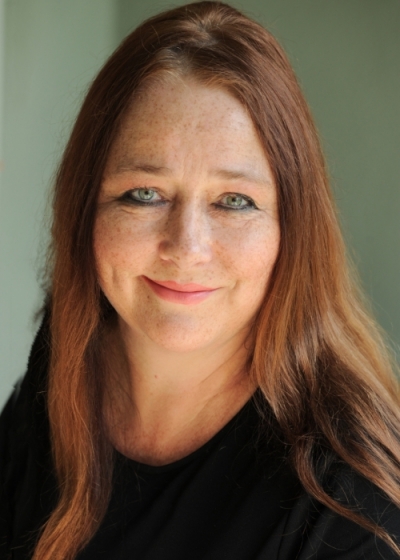
Didi Hirsch is a mental health clinic for underserved populations of all ages and serves as the National Suicide Prevention Lifeline’s call center in LA. Didi Hirsch is a primary resource for 211 callers who express suicidal ideations or need mental health support.
We caught up with Sandri Kramer, Didi Hirsch Suicide Prevention Center's previous Crisis Line Director and current Project Manager, at the 8th Annual Suicide Prevention Summit to get her thoughts on what is most important to know about preventing suicide both as an individual and as an agency.
Sandri Kramer has worked in suicide prevention for 24 years and is an active leader in the broader countywide initiative to prevent suicide. She started off as a volunteer for a suicide hotline call center in Texas during college. But it clearly stayed with her. “It hooked me. I really liked it. I liked being able to help.”
Warm Handoffs
When 211 LA was still known as Info Line (prior to 2005), Sandri first started talking about how the two organizations could better work together in serving each other’s callers. That transition highlighted a crucial need for all call centers to improve their systems and protocols to allow for smooth warm transfers.
211 staff are trained to handle active suicide calls by de-escalating crisis situations and connecting with law enforcement so they can intervene and prevent suicide. Now with the County MET teams trained to respond specifically to crisis and mental health-related incidents, 211 has more appropriate law enforcement resources to access during active suicide calls. For callers who express suicidal ideation or other related feelings, these callers are connected to Didi Hirsch and other County Mental Health Services.
In this latter practice, Sandri is emphatic about the importance of warm transfers and staying on the line until someone answers.
“We may have a person who is so depleted at the end of a crisis call that the last thing they want to do is now call another number,” explained Kramer.
The goal is to keep the person talking until they are connected to help. It helps anyone going through a crisis to maintain their connection with the first person they’ve built trust with.
Sitting with the Beast
For many of us, there is fear about how we would respond or react if someone we knew and loved expressed a desire to end their life. Would we know what to do or what to say?
Sandri provides clarity for us on what works which is at the core of a course the Didi Hirsch SPC Outreach Team often teaches at USC’s School of Social Work and other academic and clinical institutions.
“Don’t tell them how much they have to live for or do things that they can do to get better. Ask them why they want to die and let them talk. As they do that, in that whole process, you will A) build a connection, and B) the life side will start to come out. And when that happens, all you need to do is support that.”
Once someone is able to recognize that part of them wants to live, you can help them explore other options, while still acknowledging suicide as a possibility.
Safety Planning: A New, but Necessary Component
At the 8th Annual Suicide Prevention Summit, Sandri presented with Shawn Silverstein in a session entitled “Suicide Risk Assessment and Safety Planning for Everyone: How You Can Help.” In their presentation, they discussed the process of developing a safety plan in a collaborative manner with people who might be at risk of suicide. Safety plans act as a personalized menu of resources and options other than suicide or engaging in non-suicidal self-injurious behaviors to better be able to manage stress, depression, crisis, and triggers.
“That concept is actually kind of new,” says Sandri. Before, the system primarily operated in terms of risk, assessment, a no-suicide contract, and referrals. There was no way to make sure people followed up on those referrals. When you’re coping with so many other stressors, it can be hard to navigate your way out of them without support.
Because suicidal ideation ebbs and flows, as Silverstein had described it, it can unexpectedly be really intense and at other times you can think that you’re fine and don’t need support. A safety plan is there to help someone get back on track.
How to Cope as a Service Provider and Crisis Responder
The biggest struggle for a first responder or crisis hotline employee is not knowing what happened to the caller after they transferred them. Tracking would get in the way of confidentiality. Follow-up surveys are a good way to determine whether someone got connected, but it’s not always appropriate to ask of someone during or after a crisis call.
An important piece of advice from Sandri for someone who does crisis work is:
“Recognize the time when you need to take care of yourself first. If you do not engage in good self-care, you may experience difficulty with this line of work.”
It Takes a Village
When it comes to changing an entire system to make resources and a healthy life more accessible to everyone, Sandri says that it takes patience and persistence.
“I’m really happy about the progress we’ve been making through collaboration. That’s why the theme of the conference was really about finding your role. It takes a village.”
Updated 9/28/18




